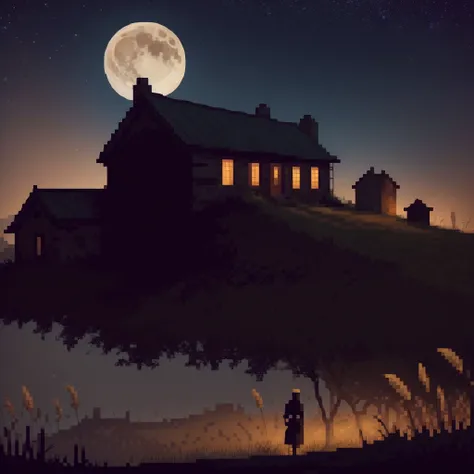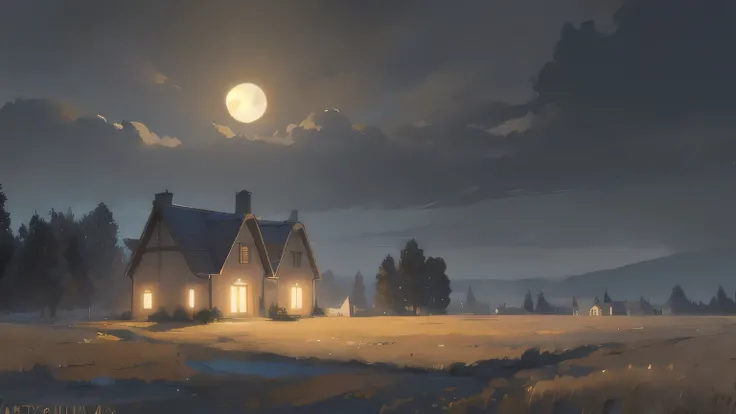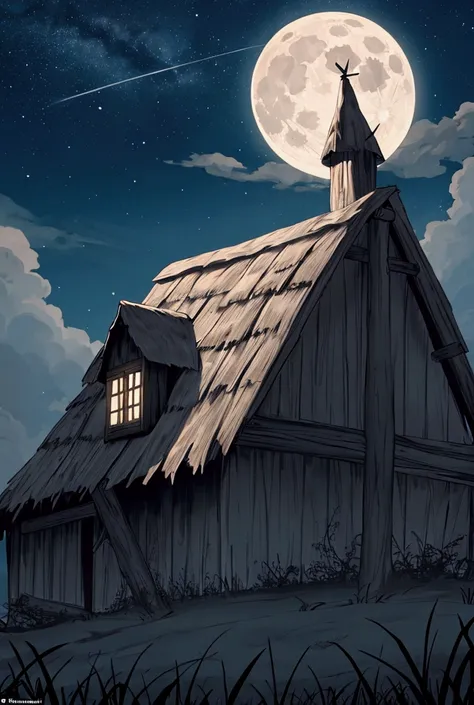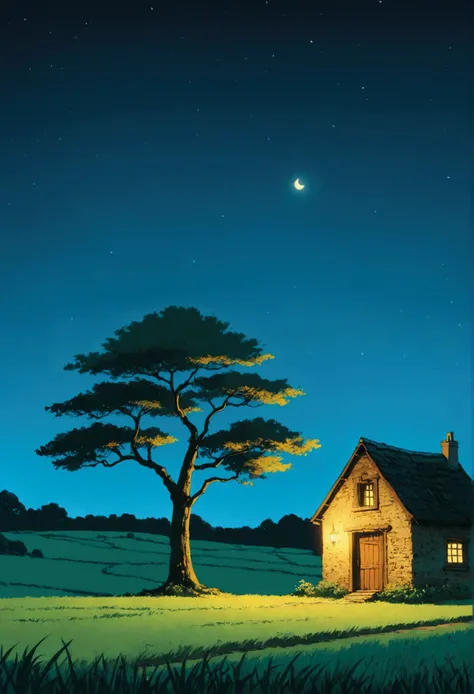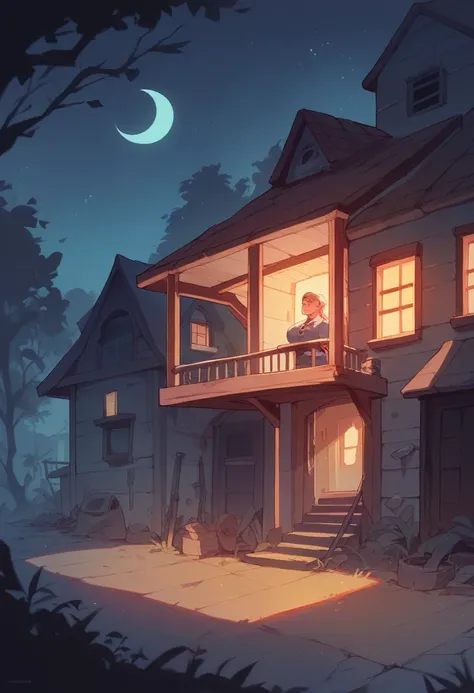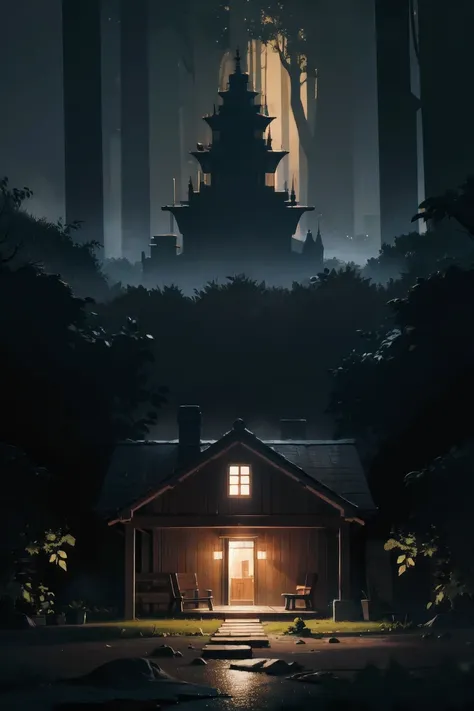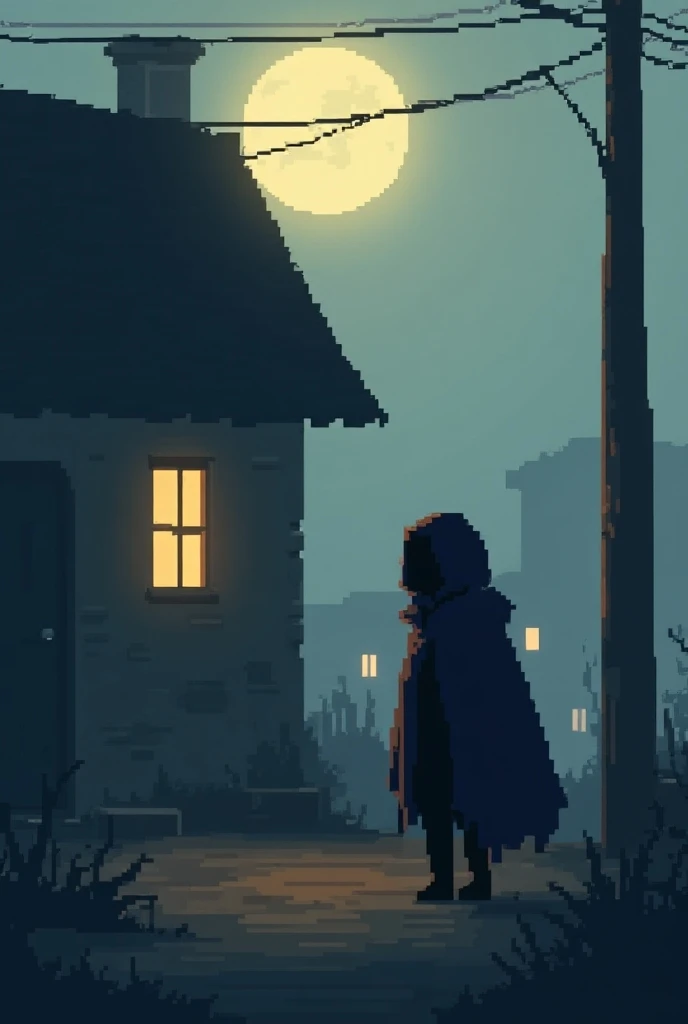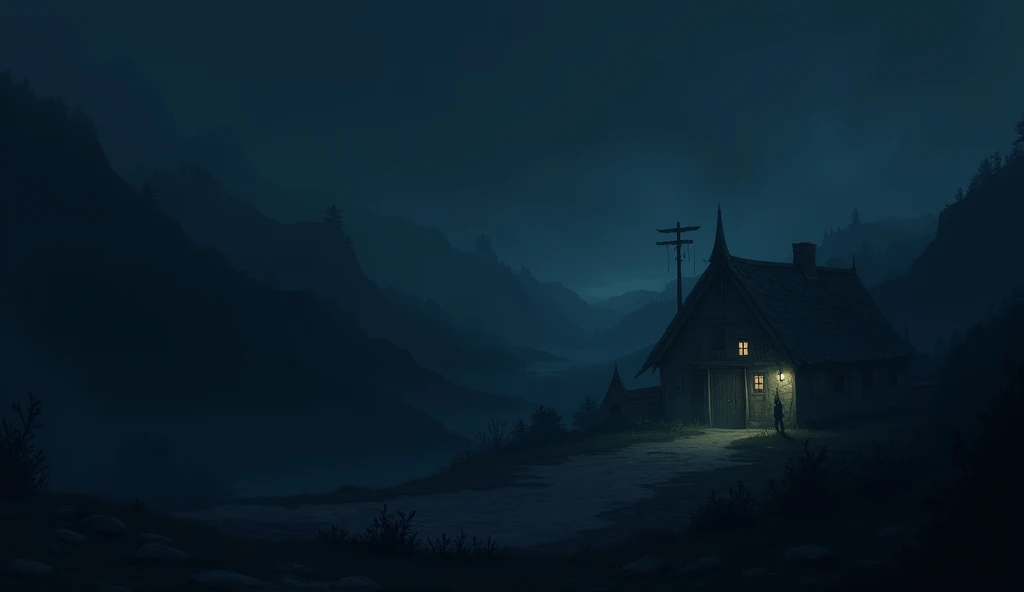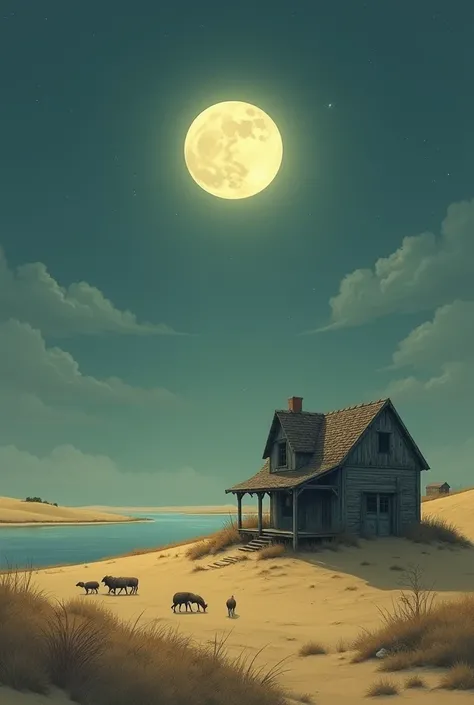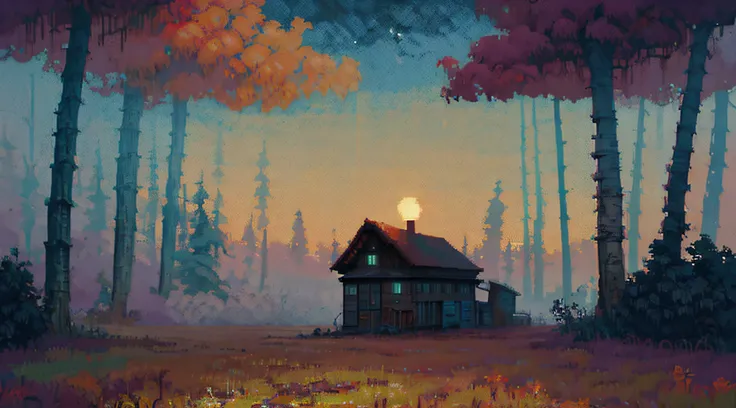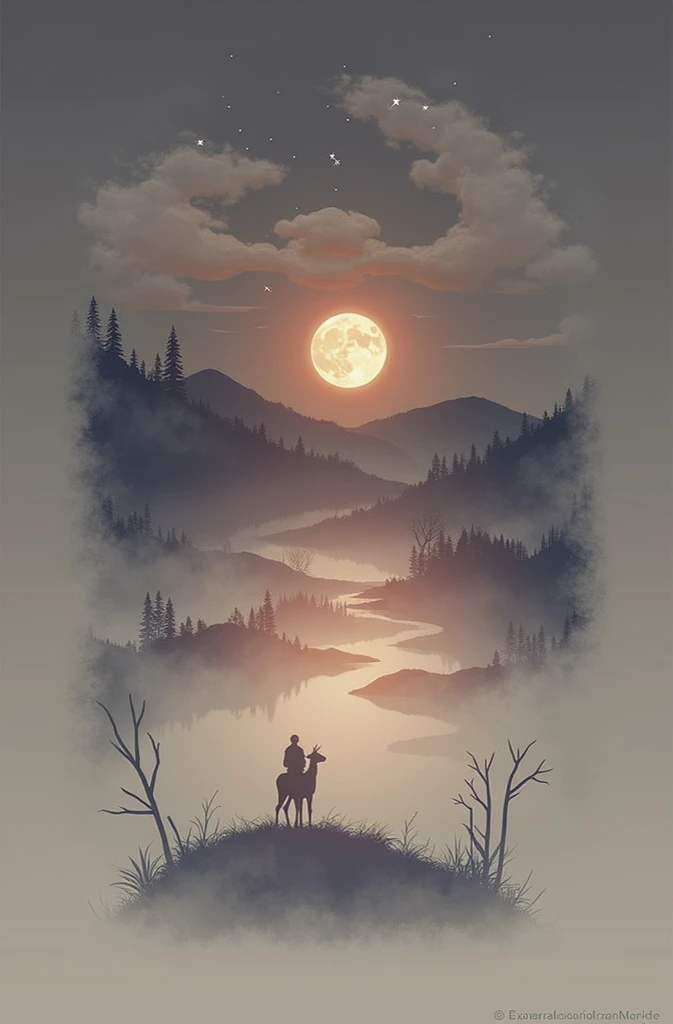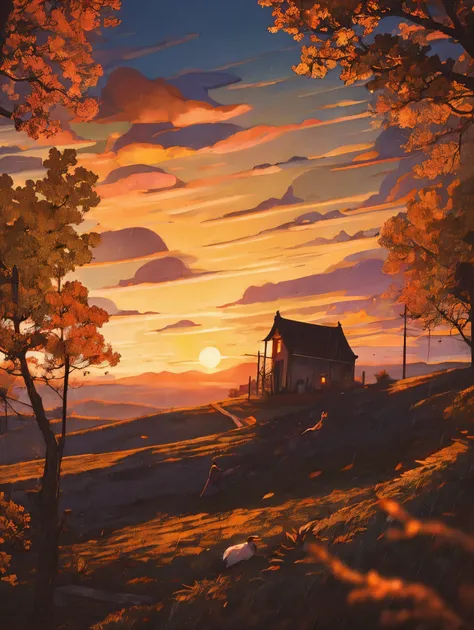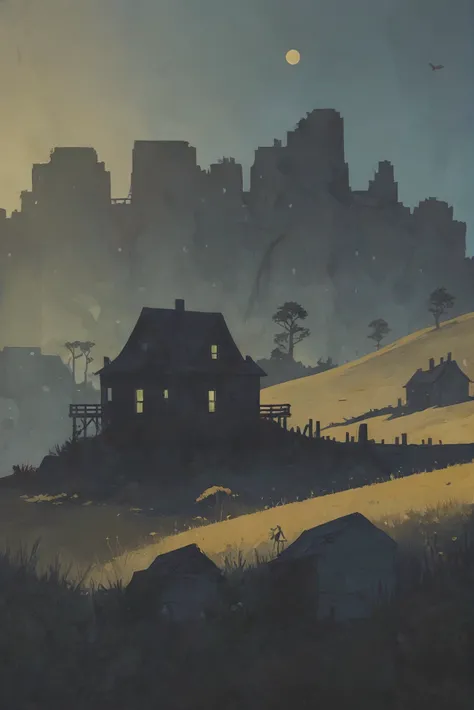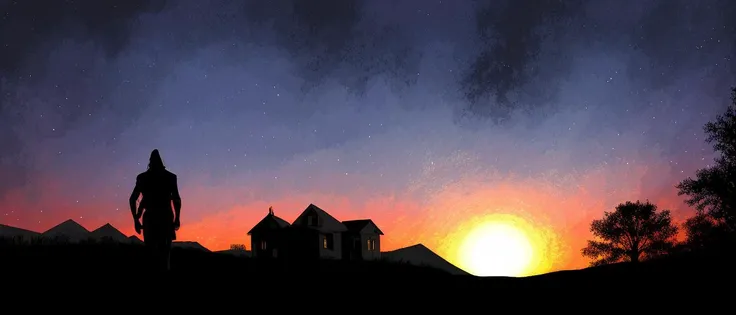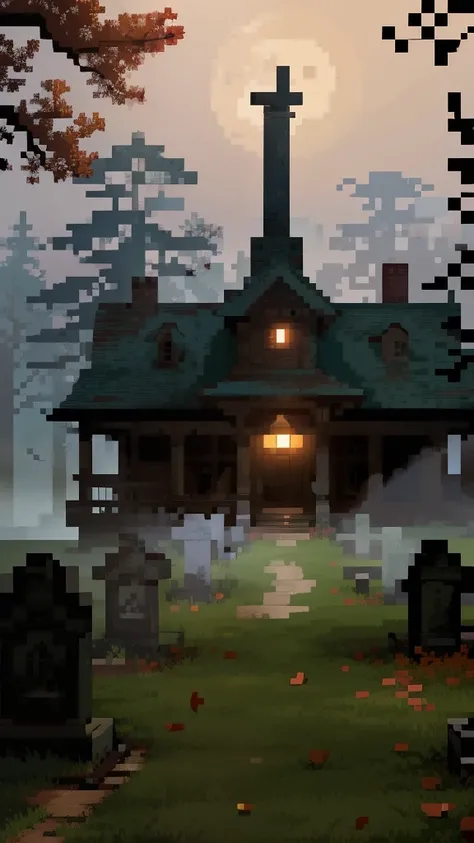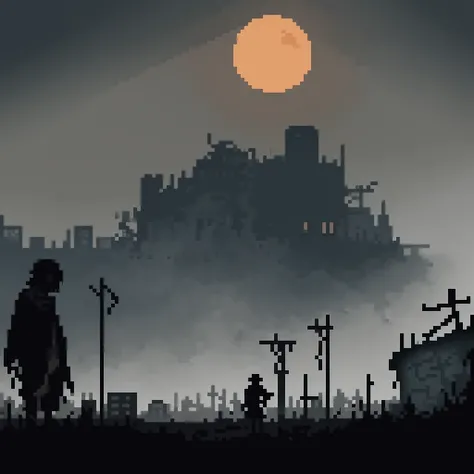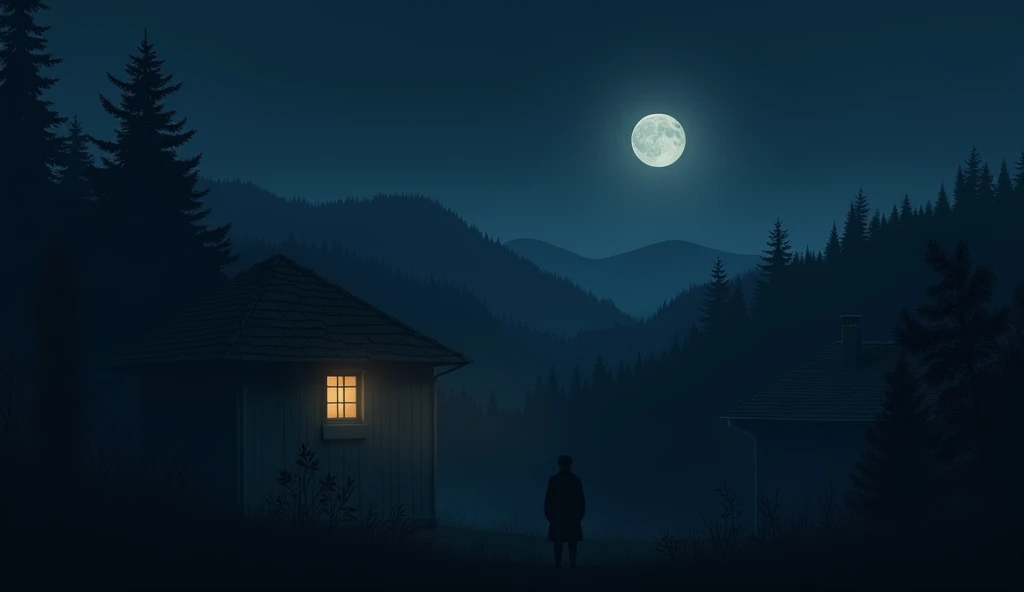In a post-apocalyptic setting, the night is deep and silent, with only the whisp


In a post-apocalyptic setting, the night is deep and silent, with only the whisper of the wind rustling through the fields of wheat that sway gently under the light of the full moon. The sky is a dark canopy, sprinkled with stars that blink intermittently, as if the atmosphere itself is trying to heal from the scars of a devastated world. At the far end of the scene lies the farmhouse, shrouded in an aura of solitude and resilience. A narrow dirt path leads to it, its edges uneven and overgrown with creeping vegetation. The path is faintly illuminated by the moon’s silvery light, creating a dramatic contrast with the surrounding darkness. Shadows cast by the wheat fields dance in soft patterns on the ground, like echoes of a simpler, more prosperous time. The farmhouse, now a solitary refuge, is a sturdy structure but marked by the wear and tear of time and adversity. Its roof is covered with weathered tiles, some of which have fallen off, exposing the rusted wooden framework beneath. Broken windows are covered with makeshift boards, and the main door, made of aged wood, hangs slightly ajar, swaying occasionally with the breeze. Surrounding the farmhouse, the wheat fields stretch out as far as the eye can see. Despite the harsh environment, the crops have grown abundantly, their golden ears shimmering with an ethereal glow under the moonlight. The wheat stands resilient, as if defying the adversities and persisting despite the world’s devastation. The air is cool and carries a subtle scent of ripe wheat mixed with a faint odor of damp earth. The atmosphere is calm, yet not entirely tranquil; there’s a sense of constant vigilance, as if the very land is watching any movement, guarding the secrets of a distant past and an uncertain future. The scene is a portrait of contrast, where the serene beauty of nature persists amidst chaos and destruction, and the farmhouse stands as a symbol of survival and hope in a transformed world.
Подсказки
Копировать подсказки
In a post-apocalyptic setting
,
the night is deep and silent
,
with only the whisper of the wind rustling through the fields of wheat that sway gently under the light of the full moon
.
The sky is a dark canopy
,
sprinkled with stars that blink intermittently
,
as if the atmosphere itself is trying to heal from the scars of a devastated world
.
At the far end of the scene lies the farmhouse
,
shrouded in an aura of solitude and resilience
.
A narrow dirt path leads to it
,
its edges uneven and overgrown with creeping vegetation
.
The path is faintly illuminated by the moon’s silvery light
,
creating a dramatic contrast with the surrounding darkness
.
Shadows cast by the wheat fields dance in soft patterns on the ground
,
like echoes of a simpler
,
more prosperous time
.
The farmhouse
,
now a solitary refuge
,
is a sturdy structure but marked by the wear and tear of time and adversity
.
Its roof is covered with weathered tiles
,
some of which have fallen off
,
exposing the rusted wooden framework beneath
.
Broken windows are covered with makeshift boards
,
and the main door
,
made of aged wood
,
hangs slightly ajar
,
swaying occasionally with the breeze
.
Surrounding the farmhouse
,
the wheat fields stretch out as far as the eye can see
.
Despite the harsh environment
,
the crops have grown abundantly
,
their golden ears shimmering with an ethereal glow under the moonlight
.
The wheat stands resilient
,
as if defying the adversities and persisting despite the world’s devastation
.
The air is cool and carries a subtle scent of ripe wheat mixed with a faint odor of damp earth
.
The atmosphere is calm
,
yet not entirely tranquil
;
there’s a sense of constant vigilance
,
as if the very land is watching any movement
,
guarding the secrets of a distant past and an uncertain future
.
The scene is a portrait of contrast
,
where the serene beauty of nature persists amidst chaos and destruction
,
and the farmhouse stands as a symbol of survival and hope in a transformed world
.
Информация
Checkpoint & LoRA

Checkpoint
StylizedPixel
#Ландшафт
0 комментариев
1
6
0









